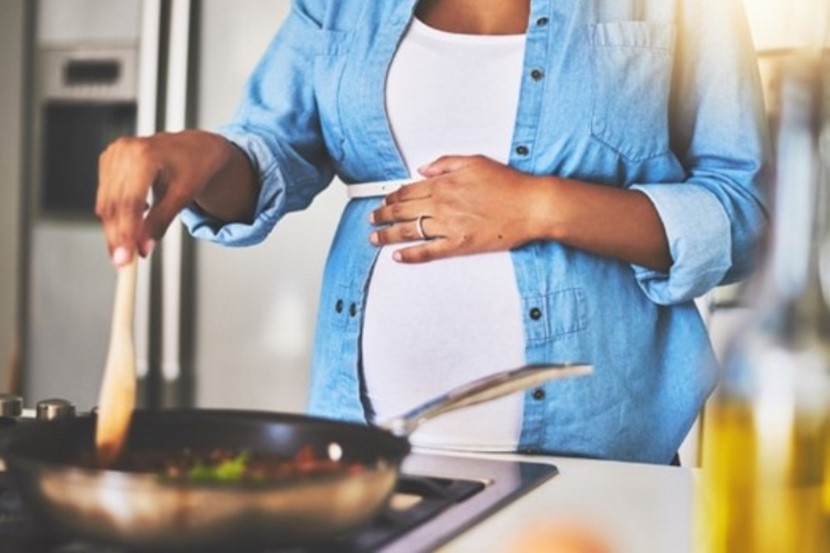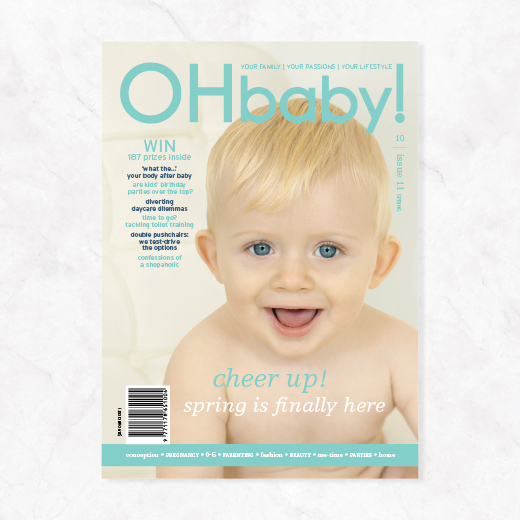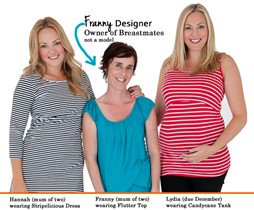A nutritionist's guide: what to eat during pregnancy

Are you confused about what you can and can't eat during pregnancy? So are we! Nutritionist Leanne Cooper helps set us straight.
Eating healthily during pregnancy helps baby's growth, development and well-being. Not only must you eat well, but you need to eat carefully, avoiding unsafe foods, for both you and your baby's well-being. But has your internet surfing left you confused?
Even the most well-trained of us can still be mystified about what can be eaten during pregnancy and what can't. Accessing consistent advice or making an informed decision can be confusing. I've gathered some tips that might help to clarify the issue and leave you feeling more confident in those early stages of parental responsibility.
Do I have to give up Camembert cheese
Well, that depends on a few things. There are two potential issues with soft cheeses, firstly the risk of listeria infection and secondly the bacteria that may grow on the surface. But all is not lost: if the cheese is made from pasteurised milk and is cooked you can still enjoy a little.
So what is listeria?
Listeria monocytogenes infection can cause a mild unwellness during pregnancy. However, it can lead to miscarriage, stillbirth, premature birth or issues with the foetus. High-risk foods include:
◻️ Smoked fish, including mussels, oysters and raw fish.
◻️ Pre-prepared salad, including coleslaw(because of the mayonnaise).
◻️ Pre-cooked meat products that do not require further cooking, such as pâté and deli meats.
◻️ Unpasteurised milk and products made from it.
◻️ Soft-serve ice-cream.
◻️ Soft cheeses, largely due the to surface moulds, though if they are well-cooked and hot they are considered to be safe.
What about fish?
One of the concerns about eating fish is exposure to toxins, namely mercury, which can be dangerous to the foetus. So, while the dietary guidelines recommend one to two fish meals a week, this can vary depending on the type of fish. Fish such as billfish (swordfish/broadbill and marlin), shark/flake, orange roughy and catfish are in a league of their own - there are clear limitations on consumption of these fish.
Food Standards Australia New Zealand (FSANZ) advises that pregnant women, women planning pregnancy and young children continue to consume a variety of fish as part of a healthy diet but limit their consumption of certain species, which are listed below. Keep in mind that this advice is based on fish in Australian and New Zealand waters and populations, so if you are purchasing fish from other regions this may not be relevant.
So how much fish is safe? According to Food Standards, pregnant women should:
◻️ Limit to one serve (150g) per fortnight - billfish (swordfish, broadbill and marlin) and shark (flake), with no other fish eaten in that fortnight.
◻️ Limit to one serve (150g) per week - orange roughy (deep sea perch) or catfish, with no other fish eaten that week.
◻️ Don't worry if you've had the odd meal of fish with high levels of mercury. It's only a potential problem if you eat that type of fish regularly, as this can cause a build-up of mercury in your blood.
Is a coffee or a cuppa safe?
Now, few would tell you that you have to give up your one a day coffee or tea, however, a word of caution is warranted if you are a heavy drinker of caffeinated drinks. Alertness is a good thing at relevant times of the day. However, if you are finding pregnancy or baby is keeping you awake already, you may need to look at either timing or amount of caffeine-containing drinks.
More importantly though, there has been some research suggesting that excessive intake of caffeine increases the risks of miscarriage. Recommendations put a safe level at two cups of coffee and four cups of tea a day. 'Energy' drinks are not recommended during pregnancy as some can have very high levels of caffeine and may contain ingredients not suitable for pregnancy. Don't worry if you have been over-indulging, the evidence is still unclear and of course everyone and every pregnancy is different.
| Tips to reduce your caffeine intake and its effect: ◻️ Opt for decaffeinated drinks (ideally, if it is coffee, check it is steam-decaffeinated to reduce any exposure to toxins) ◻️ Consider de-tannininsed teas. Green tea, for example, has almost 30% more tannin that as a diuretic can leave you feeling very thirsty. ◻️ Don't forget to account for other caffeine-containing drinks such as hot chocolate, cola, and some soft drinks. ◻️ Check with your health food shop for herbal teas that are suitable during pregnancy, or opt for the safer varieties such as peppermint, lemon or chamomile. ◻️ Ensure you drink plenty of water and other healthy beverages. |
What about the odd tipple?
There is now clear evidence that consuming alcohol during pregnancy can affect foetal development, as it's linked to low birthweight, miscarriage and other serious concerns. Most agencies have updated their recommendations to total avoidance of alcohol during pregnancy.
Reducing allergy in the family
In the past, avoiding allergy-causing foods was thought to be a good way to reduce the risk of your child being allergic. While research doesn't support that altering your diet while pregnant will reduce this risk, there is plenty of anecdotal evidence. The important thing to remember is that if anything is removed from the diet you should replace it with a healthy option. Each food group has specific nutrient properties, so it is important to ensure you maintain a balanced diet.
Salt
Latest estimates suggest that we are eating around 6g or more of salt a day in Australia and around 9 grams in NZ (3g is about a teaspoon), and that ideally we should get this figure under 4g a day (1600 mg of sodium, salt being a combination of both sodium and chloride). Most of the salt we consume comes from processed foods (around 65-75%). Low-salt foods (foods with up to 120 mg of sodium per 100g of food) are standard recommendations for children and adults. Packaged foods with less than 120mg per 100g are a rarity, so monitoring your intake of both salt and processed foods during pregnancy is likely to be beneficial.
Sugars
Many natural foods contain simple carbohydrates/sugars and each simple sugar has an important function. For example, fruit sugar (fructose) aids recovery after exercise; breastmilk has a simple sugar called galactose, which with lactose is important for immunity; and blood sugar (glucose) fuels our brain. So to say that all sugars are bad is simply not true. What we do need to take care with is how much simple sugars represent of our daily diet (up to about 10% of calories can come from simple sugars).
The least-desirable simple sugar is added sugar, such as common table sugar (sucrose). Added sugars tend to provide calories (or kilojoules) without offering other nutrients such as vitamins, minerals and dietary fibre. Calories derived from these sugars are often referred to as "empty". When you are pregnant quality nutrient dense foods is your best option.
A nutrition panel is a great way to determine the amount of simple sugars in a product. Grab a cereal packet. Using the 100g column, note the difference between the "sugars" figure (represents all sugars, naturally occurring and added) and the "total carbohydrates" figure (all carbohydrates). Subtract the sugars figure from the carbohydrates figure; the resulting number represents complex carbohydrates (or "not simple sugars"). The greater this figure the more likely the cereal is a healthier option (at least in this respect). You are likely to find that many breakfast cereals contain a very high percentage (85%) of simple sugars.
Trans fats
Trans fats act in a similar way to saturated fat in the body: they increase the bad cholesterol (known as LDL cholesterol or low-density lipoprotein) and also increase the risk of heart disease such as atherosclerosis. But trans fats go one step further than saturated fat - they also lower the good cholesterol (HDL). HDLs mop up fat in the body for excretion, so it's a double whammy. Therefore, while saturated fat in excess can pose a health problem, in appropriate amounts it is essential for life. However, trans fats, to the best of our knowledge, perform no health function; instead they have the potential to do significant damage.
Levels of just 2% of trans fats (of our total energy intake) appear to significantly affect health.
Sadly, in Australia and New Zealand, manufacturers are not required to note the presence of trans fats in their products unless they make a claim about cholesterol or fatty acids. No claim, no information!
| Tips to reduce your trans fat intake: ◻️ Limit your use of processed meats, for example salami which has one of the highest levels of trans fats. ◻️ Currently the levels of trans fats in fast foods and donuts is jiggling about. The increasing awareness of consumers has seen a drop in the levels of trans fats in many of the usual suspects, ideally check government watch dog sites for the latest as new reviews are released regularly. ◻️ If you choose to eat margarine, opt for brands that note less than 1% trans fats on the label and are low in saturated fat. ◻️ Limit the amount and regularity of takeaway food and deep-fried food. ◻️ Reduce packaged foods. ◻️ Limit or avoid cakes, biscuits, donuts etc. ◻️ Reduce foods with "hydrogenated" or "partially hydrogenated" vegetable oil as an ingredient, biscuits are high on this list, so read ingredients labels. ◻️ Opt for natural spreads made from original whole foods; for example, 100% almond paste, avocado, hummus, banana. |
What's the take home message?
The real message from this is not that eating is tricky but that the simple things can sometimes be hardest to see and do. A good diet is one that is rich in a variety of whole, fresh foods, lots of fresh produce and foods resembling their original state.
Leanne Cooper is a Nutritionist.

AS FEATURED IN ISSUE 11 OF OHbaby! MAGAZINE. CHECK OUT OTHER ARTICLES IN THIS ISSUE BELOW

















